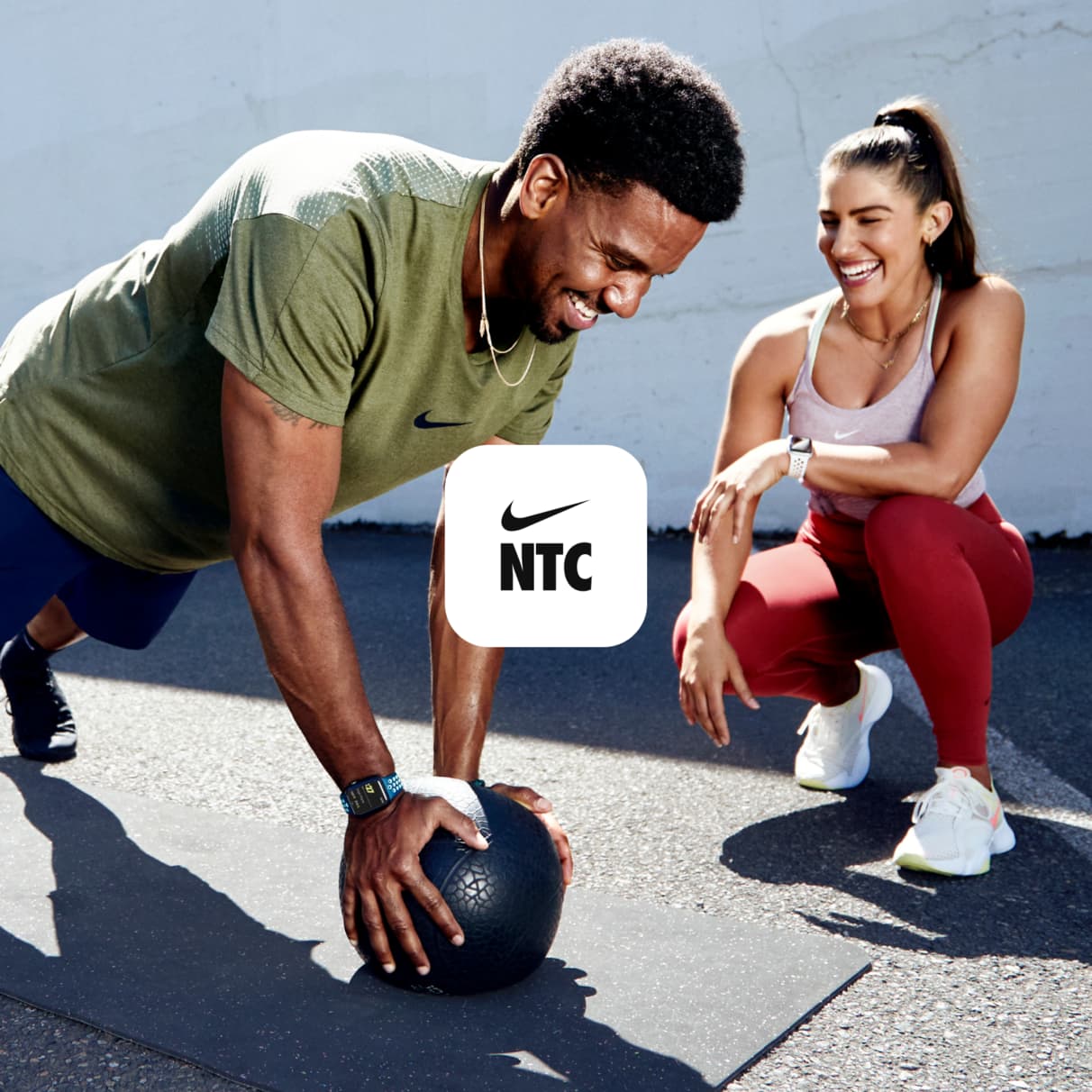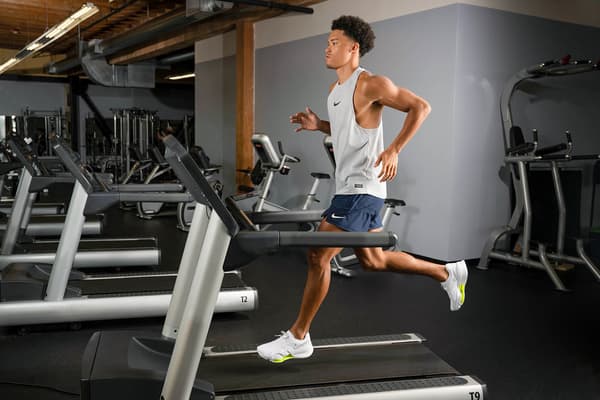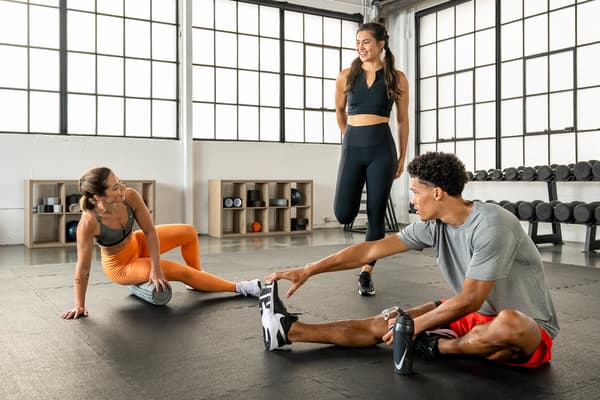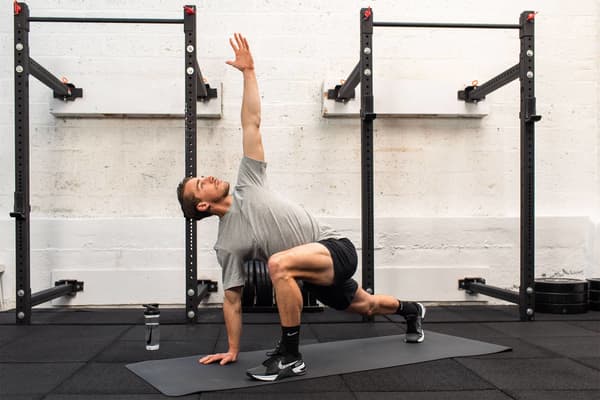The Top Benefits of Foam Rollers, According to Experts
Health & Wellness
Foam rollers can boost performance and recovery, but only if you're using them correctly. Here's how to make the most of this tool.

Found in most gyms and physiotherapy offices—and an easy addition to your home gym—foam rollers are typically lightweight, portable and can be useful tools for everything from easing sore muscles to activating them before a workout and aiding recovery afterwards.
But to enjoy the various benefits foam rolling can provide, it's important to use it correctly, especially when it comes to post-workout recovery. For starters, you may think you're promoting recovery with a post-exercise rolling session, when you're doing the opposite. Here's what foam rolling is supposed to do, along with strategies to help boost your performance.
What Does Foam Rolling Do?
On a basic level, foam rolling involves applying pressure to stimulate blood flow in the muscle and fascia. This can create analgesic (pain-relieving) changes at the neuromuscular level, according to a 2017 study in the European Journal of Applied Physiology.
And a 2019 meta-analysis in Frontiers in Physiology adds that this pain reduction is related to less stiffness in the connective tissue, which is what holds your muscles, nerves and fascia in place, as well as regulating the way your brain assesses pain. Other benefits include:
- Increased blood flow to muscles before exercise, which helps promote recovery, per a 2017 study in the International Journal of Sports Physiology and Performance
- Possible short-term alleviation of inflammation in muscle tissue, which a 2021 study in Frontiers in Physiology found helps reduce soreness
- Improved range of motion due to myofascial release, which means muscles are less tense and there's better lymphatic and blood circulation, per a 2022 study in the Journal of Sports Science and Medicine
- Potential for improved jump performance, agility and strength due to better range of motion, per a 2022 review in Sports Medicine - Open
When Should You Foam Roll—Before or After a Workout?
While foam rolling can be an effective part of your warm-up routine, it's not as productive when used for post-workout recovery, according to the 2019 meta-analysis in Frontiers in Physiology.
There's a widespread belief that foam rolling helps prevent lactic acid build-up in the muscles, which, supposedly, can speed up recovery. The problem is that there isn't any evidence to back this up, says Lynn Millar, PhD, a physiotherapist and chair of the physiotherapy department at Winston-Salem University.
"The research simply doesn't support the idea that foam rolling after exercise alters the normal healing process that's part of muscle growth or that it can reduce soreness in a way that helps performance", she says. "There actually seems to be a limit on how much we can do in general to change that process".
So does that mean it's best to foam roll before exercise? That does seem to offer some advantages, says Diana Garrett, PT, DPT, CSCS, outpatient rehabilitation supervisor at Providence Saint John's Health Center's Performance Therapy.
"Similar to dynamic stretching [ones that involve movement vs. being held in place], foam rolling can be used to help improve range of motion and flexibility and provide a cue for the body that prepares it for more high-intensity activity", she says. This is true not just for your muscles but also for nerves and joints, since the increased blood flow affects them as well.
Also, like dynamic stretches that mimic the activity you're about to do—jumping before basketball, for example, or an easy jog and lunges before sprinting—foam rolling should focus on the muscles you're about to use, Garrett says. For example, runners can roll their quads, hamstrings and calves to fire up the lower-body muscles they need for that sport.
Common Foam-Rolling Mistakes to Avoid
In addition to overusing foam rolling after a workout, Heather Hart, certified running coach and ACSM-certified exercise physiologist, says there are a few other common missteps:
1.Foam Rolling Anything That Feels Tight
Often athletes will foam roll an area they perceive to be "tight", but the pain, inflammation or damage is actually in ligaments, tendons or bone, rather than the muscle itself. Foam rolling these areas won't only feel uncomfortable but will have little effect on the tension—and may make things worse.
Muscles that are too tight for rolling don't just feel stiff, Hart says, they'll also feel tender to the touch, especially with concentrated force, like poking them with your finger. If you feel sharp pain while doing this, it's better to roll around those muscles, not directly on them.
2.Rolling Your IT Band
A common mistake, especially with runners, is foam rolling up and down the iliotibial (IT) band on the lateral side of the upper leg, Hart says. This can actually cause more discomfort and pain, as the IT band is non-contractile (not dynamic) like muscle tissue.
And, since the IT band connects to the knee joint, improper foam rolling could exacerbate knee pain. Hart recommends a better option: foam rolling the hips and glutes, focusing on the tensor fasciae latae—the small muscles at the top and side of the hips—which may help alleviate IT band pain.
3.Foam Rolling an Injury
Rolling directly over injured muscle tissue can worsen the damage and slow down recovery time, Hart says. Her rule of thumb? If the area is sore to a light or moderate touch, don't foam roll it.
Foam rolling shouldn't be painful and you shouldn't have to limit the amount of pressure you put on the roller due to pain. If you're a newbie to rolling and feel a dull pain or slight discomfort, that's likely not an injury. But if the pain is sharp and sudden, it's better to save the rolling for another day.
4.Only Focusing on One Area
Spending too much time in one area can irritate nerves and cause bruising and other tissue damage. About 30 seconds of rolling up and down the length of the muscle is generally more than enough, Hart says.
Not sure if you're rolling correctly? Check with your physiotherapist, personal trainer or coach for guidance.
5.Foam Rolling Your Back
Your upper back—lats, traps and shoulders—can be targeted with light pressure, but Hart recommends avoiding foam rolling your spine, neck or lower back, as these areas have dense tissue such as joints, bones, ligaments and tendons.
Larger muscle groups with a significant amount of tissue are better able to withstand the pressure, Hart says. For example, your glutes, hamstrings, quads and calves are all ideal targets, she says.
6.Relying on Foam Rolling as a Primary Recovery Method
Again, foam rolling isn't designed for recovery; it's best used as a way to activate muscles before a workout. Instead, prioritise proven post-workout recovery methods like proper nutrition and adequate rest periods.
7.Rolling if You Have Certain Health Conditions
"People with certain health conditions like diabetes mellitus, lymphoedema, varicose veins and severe osteoporosis should avoid foam rolling unless recommended by their physician".
Words by Elizabeth Millard
For more expert-backed tips, make sure you download the Nike Training Club App!





